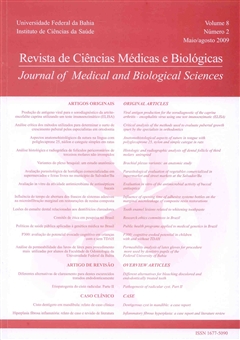P300: cognitive evoked potential in children with and without TDAH
DOI:
https://doi.org/10.9771/cmbio.v8i2.4071Keywords:
Audiometry Evoked Response, Event-Related Potentials P300 - Methylphenidate, Evoked Potentials Auditory, Attention Deficit Disorder with HyperactivityAbstract
This study presents the result of the investigation of methylphenidate effect in the latency and amplitude of P300 in children with TDAH. It also investigated the cognitive potential P300 in children with TDAH in comparison with a control group. Two studies were developed: the first, considered almost experimental, of analytical character, only in individuals with TDAH, esteemed the latency and amplitude of P300 in function of methylphenidate use. The second, a descriptive study, of exploratory character, esteemed the latency and amplitude of P300 in cases (TDAH) and controls (without TDAH). The results shows that Ritalina LI reduces the latency of P300 in children with TDAH, with significant results just in the group of age between 11 to 16 years. The amplitudes was not sensitive as a parameter for evaluation of Ritalina in P300, the results presented a great variability in the answers. It was observed, also, that the children with TDAH have larger latencies and reduced amplitudes when compared to the control group, it was verified statistical significance, once again, just in the group of age between 11 to 16 years. Individuals in the age from 7 to 10 years present larger latencies and reduced amplitudes, independent of the use of Ritalina, that those in the age from 10 to 16 years. This study allow us to infer that the use of Ritalina improves the attention process favoring the hearing discrimination and the power of decision.Downloads
Download data is not yet available.
Downloads
Published
2009-06-02
How to Cite
Borja, A., & Ponde, M. (2009). P300: cognitive evoked potential in children with and without TDAH. Journal of Medical and Biological Sciences, 8(2), 198–205. https://doi.org/10.9771/cmbio.v8i2.4071
Issue
Section
ORIGINAL ARTICLES
License
The Journal of Medical and Biological Sciences reserves all copyrights of published works, including translations, allowing, however, their subsequent reproduction as transcription, with proper citation of source, through the Creative Commons license. The periodical has free and free access.


